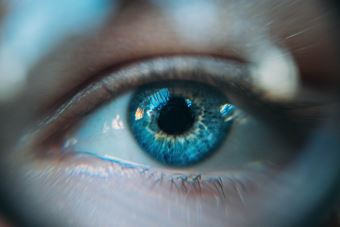
Virtual reality has exploded in popularity over the last number of years. As this technology becomes more available to the greater population, we want to be sure that what we’re using is safe. While virtual reality is becoming instrumental in solving some challenging problems, we’ve gotta ask ourselves… Does Virtual Reality itself pose a threat to our health?
VR Related Health Risks
As it is with practically all things in life, VR might have some negative effects on your health and well-being if used thoughtlessly and/or you have a predisposition to certain illnesses. Let does next look at some of the risks in more detail.
1) VR induced Disorientation and Nausea
Over time, our senses have developed to work in unison. This allows us to remain balanced when completing tasks, doing physical exercise, or virtually anything else that needs direct coordination.

When putting on a virtual reality head-mounted display (HMD), our senses are no longer working in unison. This is why it’s not uncommon for people to feel dizzy or disoriented when using a VR headset.
Those who aren’t particularly used to VR often use it for 30 minutes or less. This is a good way to allow your body to get used to the sensation.
We’re living in a time where “Cybersickness” is a real thing! Don’t be fooled into thinking that this happens when people get sick of being in a virtual environment, No! This is a result of a particular type of motion sickness.
Typically, motion sickness occurs when you feel movement within your body (muscles, joints and the coils of the inner ear ) but don’t actually see any movement. When this happens a feeling of nausea occurs as the body is not in a state of equilibrium. This is why you may start to feel better after looking at a horizon when you’re onboard a ship.
Digital motion sickness works in the reverse. You’re able to view the movement, but it’s not registered in your body. The result, however, remains the same – you feel like death.
2) VR Can Cause an Onset of Seizure

Those who have a history of epilepsy are advised to stay away from any sort of Virtual Reality headsets. Seizures may occur when an array of black and white lights flash in a pattern at high intervals.
The likelihood of a healthy individual having a seizure is very slim. According to the Oculus Rift User manual, only 1 in 4000 people are likely to have a seizure as a result of using VR. This estimate is the possibility of a seizure happening to an individual without a prior history of seizures.
You can read about the topic in more detail from my previous article “Can Virtual Reality Cause Seizures?”
3) Content-Based Anxiety
It should be noted that the content present by the VR system would be more effective in stimulating anxiety than traditional displays.

Some users report feelings of stress or anxiety after prolonged use of the headset. This is understandable. Unlike traditional displays, the point of VR is to be totally immersive. This immersion greatly increases the degree of the content in all aspects.
Imagine tuning into live coverage of a war-zone. The user is likely to come across feelings of stress, shock and fear.
4) VR Eye Fatigue and Soreness
If you’re part of the generation where your mother told you to stop staring at the screen and go outside, then be prepared, we’re about to have the same talk.

Typically, looking at a screen isn’t all that bad. Unwanted issues may arise when the duration exceeds acceptable limits. Staring at screens of TVs, smartphones, and VR displays won’t cause permanent eye damage. Fatigue, soreness and strain may occur after prolonged use.
This usually happens because of our blinking rates. In the dark ages (before computer screens) people used to blink roughly 15 times per minute. Current research is finding that we’re blinking anywhere from half to third of that when using computers or any other digital screens.
So if you want to avoid “eye strain” which is a symptom that may occur when focusing on a single point for an extended period of time, take regular breaks from your VR headsets if you feel strain in your eyes.
What effect does VR have on children?
Those who are parents will always want to ensure the most satisfactory environment in which their children are able to develop. Of course, the ideal isn’t always the result – if you’ve ever played an online rated R multiplayer game, you’ll know that there are far too many ‘kids‘ who have no business playing those games.

Understanding VR age restrictions
Speaking of age restrictions, manufacturers of VR headsets have come out with their own age restrictions. The Oculus Rift and Samsung’s Gear headsets are not advised for those under the age of 13. Sony offers the youngest allowance with the age minimum being 12.
What’s interesting is that HTC Vive has come out saying that their headset is not to be used by children at all. They go on to say that young children shouldn’t be allowed to use headsets.
Now you may be thinking that this is because of visual display concerns. To dig deeper, VR industry pioneer Nonny de la Pena, called Oculus, HTC, and PlayStation to directly find out about the age restriction issue.
All three companies claimed that this was due to head strap sizing issues. Of course, it would be disastrous for these companies to publicly admit any real danger – with millions in headset sales on the line.
The Adolescent Brain and VR

You may be surprised that there isn’t a common standard when it comes to VR headsets and adolescent age restrictions. The truth of the matter is that there simply isn’t enough research concerning the long term effects on adolescent brains.
One study on rats at the University of California found that neurons in certain brain regions associated with spatial learning behaved differently within and after a simulated virtual environment. The study also found that more than half of the neurons were off while in VR.
So here we are, left wondering in the gray zone. We know that young brains are significantly more neuroplastic and develop in specific ways based on internal factors such as genetics, but also external factors such as; diet, environment, exercise, learning, etc.
Of course, with more research on long-term effects, we’ll be in a better position to come to a more concrete stance. However, until that data arrives we should focus our effort on making sure that little users don’t overindulge.
Protecting against a future downside
VR is rapidly growing, with more products and applications hitting the market, the only way is up. While it’s great that more and more people are letting VR into their homes, we have to remain cautious. As humans, we become largely dependent on those things that bring us comfort and pleasure.
Sometimes these dependencies may get out of hand and form addictions. In order to prevent this from happening we have to know the potential consequences on our physical and mental health.
The tools at our disposal are only going to become more powerful. This means we should be educated and follow a simple philosophy to avoid the looming dangers. Remember to think critically, and have the best intentions at heart. Nothing in our lifetime is likely to match the complexity and pleasure of the real world, so remember to go out regularly and get a taste of the sun.
Related Articles
- CAN VIRTUAL REALITY CAUZE SEIZURES?
- APPLICATIONS OF VIRTUAL REALITY IN MEDICINE
- 9 ASTOUNDING VIRTUAL REALITY BENEFITS
- WHAT WILL VIRTUAL REALITY BE LIKE IN THE FUTURE?
